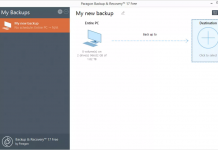
Choosing the best virtual classroom software for your needs can be a bit overwhelming, as there are many different solutions out there. Most of their features are quite similar, which can make picking one even more confusing.
Even when you find a tool with all the must-have features, how can you ensure it will give you good value for money?
That’s why you should start your search after thorough preparation. First, you need to evaluate your company’s and team’s needs to understand what features you need and where to start looking. The following tips will set you on the right path and help you find the best LMS software for online corporate training.
1. Set Your LMS Budget
Knowing how much money you need for employee training will help you narrow down the list of top virtual classroom software providers.
Instead of making a rough estimate, put everything on paper and be realistic. You don’t want to risk overspending and taking away from other business operations or underspending and not achieving your training goals.
Consider the setup, subscription, and licensing fees and any customizations and integrations you may need. Subscription fees typically include ongoing maintenance and support.
Some vendors offer training and custom content development services, which usually come at an extra fee but can save you a lot of time. Still, consider the costs of both in case you choose a vendor that doesn’t offer them.
2. Assess Your Employee Training Strategy
If your employee training strategy doesn’t address your team’s pain points adequately, you can’t expect to close all knowledge gaps with any LMS software. So, dig deeper into your team’s previous training performance to evaluate your strategy’s effectiveness.
Weigh that performance against your training goals and objectives to uncover any potential areas for improvement. Then, think about how an LMS could help you enhance the strategy.
Do you need better reporting and analytics? Do you need real-time progress tracking features to stay on top of your learners’ strengths and weaknesses? Do your employees retain more knowledge with blended learning, or do you need only video-conferencing features?
Once you know what your current strategy and training tools lack, you’ll know how to improve the training, what LMS features to look for, and how much money you’ll need to invest to reach the goals.
If you’re just starting out and haven’t trained employees before, focus on your goals and objectives to narrow down the list of must-have features.
3. Ask Employees for Feedback
You may know your employees’ strong and weak areas, but are you familiar with their different learning styles? Do you know what they expect from your virtual classroom software and the overall training? Do they even like your existing training program?
Do they need interactive features and gamification to boost knowledge retention? Do they find live training sessions more engaging than self-paced learning? Some people lack the motivation to learn at their own pace, so you may need to consider hiring instructors for live and recorded sessions.
Conduct a thorough employee training survey to gather valuable feedback from your team. Encourage them to voice any concerns and tell you more about their needs if the survey missed anything important.
4. Look Into Top-Rated Solutions
Now that you know what you’re looking for in virtual classroom software, it’s time to start googling and making a shortlist of top providers.
There are tons of online directories by industry experts where you can find everything about the best LMS software solutions. You can find out more about each product’s features, pricing, support options, free trials and demos, and much more. You can learn which tools are best for small and medium-sized businesses, and which were designed for large enterprises.
Online directories also have filters for selecting the criteria that meet your requirements and locating the right software faster. You can also sort the listings by rating and check their user reviews, which leads us to the next steps.
5. Check User Reviews
Most online directories display user reviews, but you can also explore them on many other platforms, including various blogs, review sites, and online forums.
Apart from all the basics, find out more about the top solutions’ user experience. Which tools have the most intuitive interface? Which ones are the right fit for your team’s size and type of training? Does the LMS you’re eyeing fall short on your most-needed features?
Every business has unique needs, so an LMS that someone didn’t like may be ideal for you. That’s why use cases are vital when exploring the reviews. Make sure they include details about the industry, niche, company size, project scope, and anything else you need to make the right decision.
6. Ask for Recommendations on Social Media
Just like user reviews, various social media groups can provide you with useful information on the best virtual classroom software. So, join relevant groups and ask people for recommendations. Tell them about your requirements, and you’ll get plenty of helpful tips and suggestions.
Don’t forget to visit the vendors’ profiles and read through their followers’ comments. You may find out even more about their products and user satisfaction.
7. Reach Out to Top LMS Software Vendors
At this point, you’ve done all the legwork and shortlisted top LMS software providers. You may have even picked a solution that best suits your needs. But before you register for an account, contact the vendor to discuss your business needs and ensure their product is a good fit for your use case.
Send a request for proposal (RFP) based on your LMS requirements and wait for their response. Once they know all about your needs, budget, and knowledge gaps, they’ll provide you with personalized recommendations and expert tips.
Final Words
These tips will help you choose the best virtual classroom software in no time, but be sure to test each desired product in advance. Sign up for a free trial or demo to play around with the features and pick a top-notch LMS for your team.








